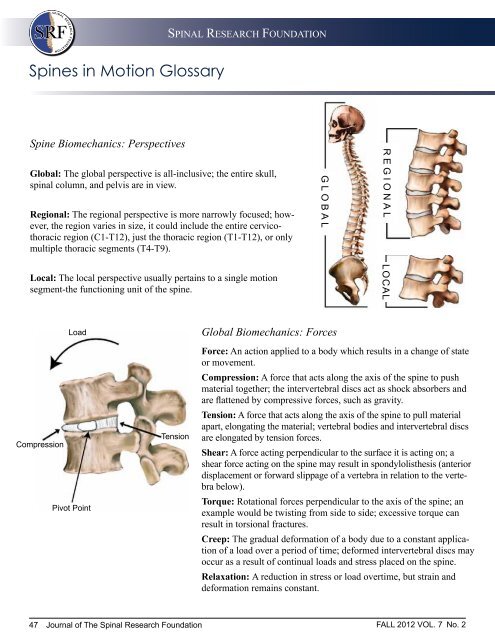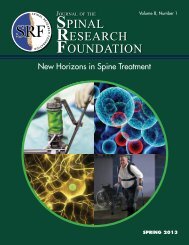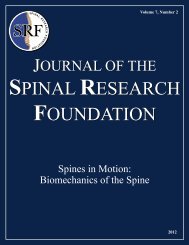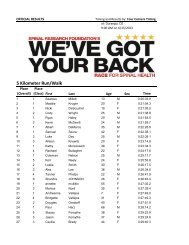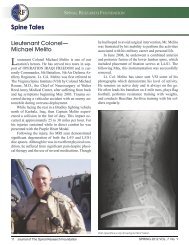Journal of - Spinal Research Foundation
Journal of - Spinal Research Foundation
Journal of - Spinal Research Foundation
You also want an ePaper? Increase the reach of your titles
YUMPU automatically turns print PDFs into web optimized ePapers that Google loves.
SPINAL RESEARCH FOUNDATIONSpines in Motion GlossarySpine Biomechanics: PerspectivesGlobal: The global perspective is all-inclusive; the entire skull,spinal column, and pelvis are in view.Regional: The regional perspective is more narrowly focused; however,the region varies in size, it could include the entire cervicothoracicregion (C1-T12), just the thoracic region (T1-T12), or onlymultiple thoracic segments (T4-T9).Local: The local perspective usually pertains to a single motionsegment-the functioning unit <strong>of</strong> the spine.GLOBALREGIONAL LOCALCompressionLoadPivot PointTensionGlobal Biomechanics: ForcesForce: An action applied to a body which results in a change <strong>of</strong> stateor movement.Compression: A force that acts along the axis <strong>of</strong> the spine to pushmaterial together; the intervertebral discs act as shock absorbers andare flattened by compressive forces, such as gravity.Tension: A force that acts along the axis <strong>of</strong> the spine to pull materialapart, elongating the material; vertebral bodies and intervertebral discsare elongated by tension forces.Shear: A force acting perpendicular to the surface it is acting on; ashear force acting on the spine may result in spondylolisthesis (anteriordisplacement or forward slippage <strong>of</strong> a vertebra in relation to the vertebrabelow).Torque: Rotational forces perpendicular to the axis <strong>of</strong> the spine; anexample would be twisting from side to side; excessive torque canresult in torsional fractures.Creep: The gradual deformation <strong>of</strong> a body due to a constant application<strong>of</strong> a load over a period <strong>of</strong> time; deformed intervertebral discs mayoccur as a result <strong>of</strong> continual loads and stress placed on the spine.Relaxation: A reduction in stress or load overtime, but strain anddeformation remains constant.47 <strong>Journal</strong> <strong>of</strong> The <strong>Spinal</strong> <strong>Research</strong> <strong>Foundation</strong> FALL 2012 VOL. 7 No. 2


